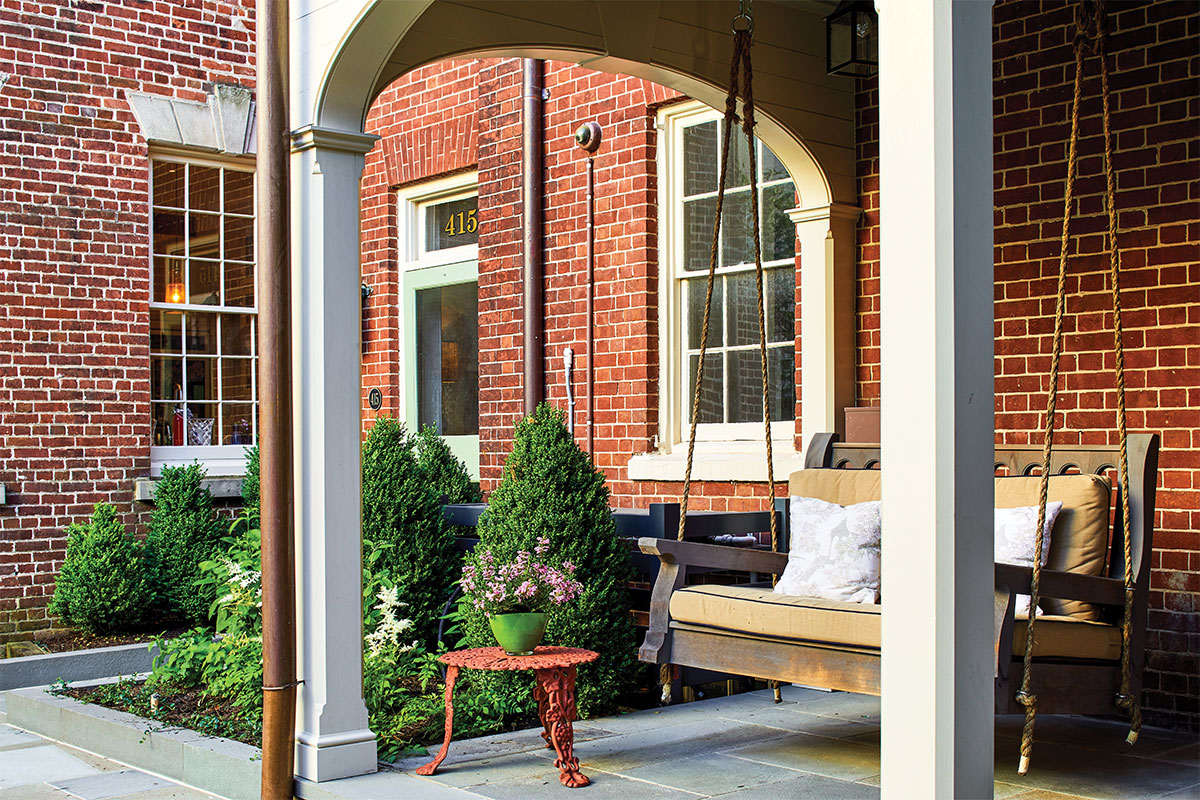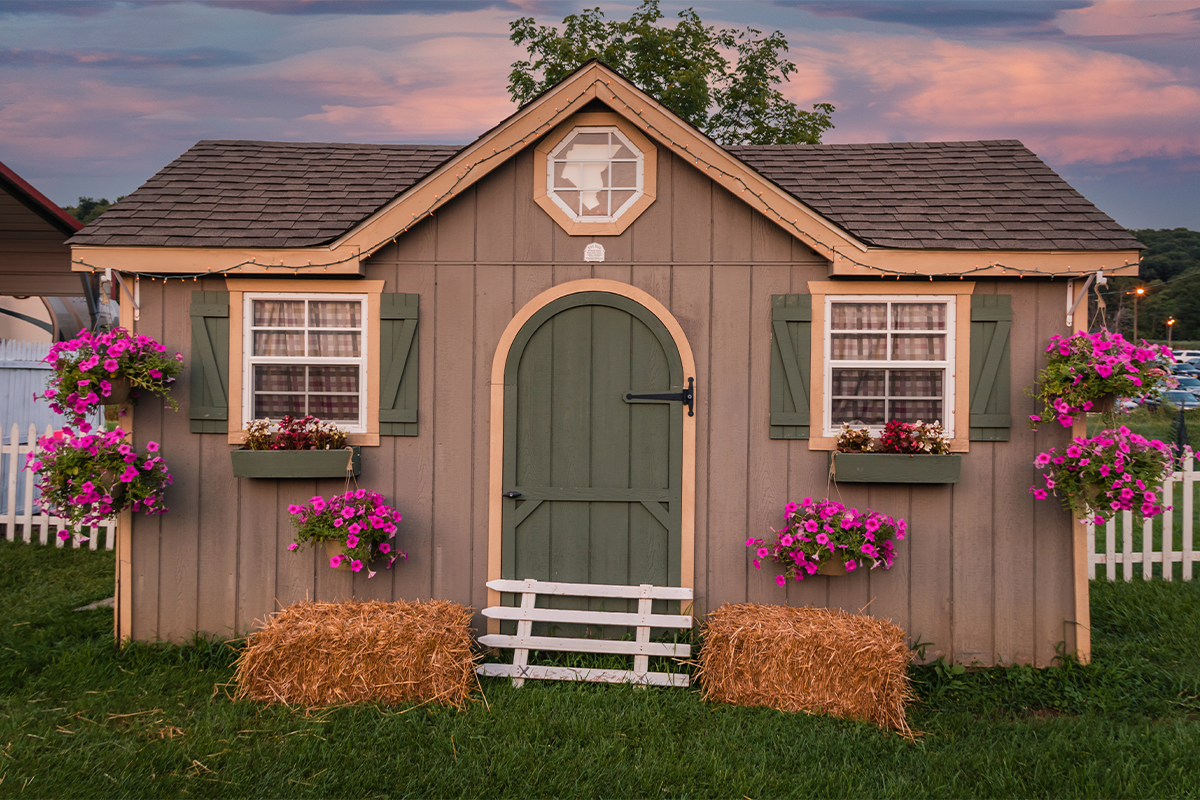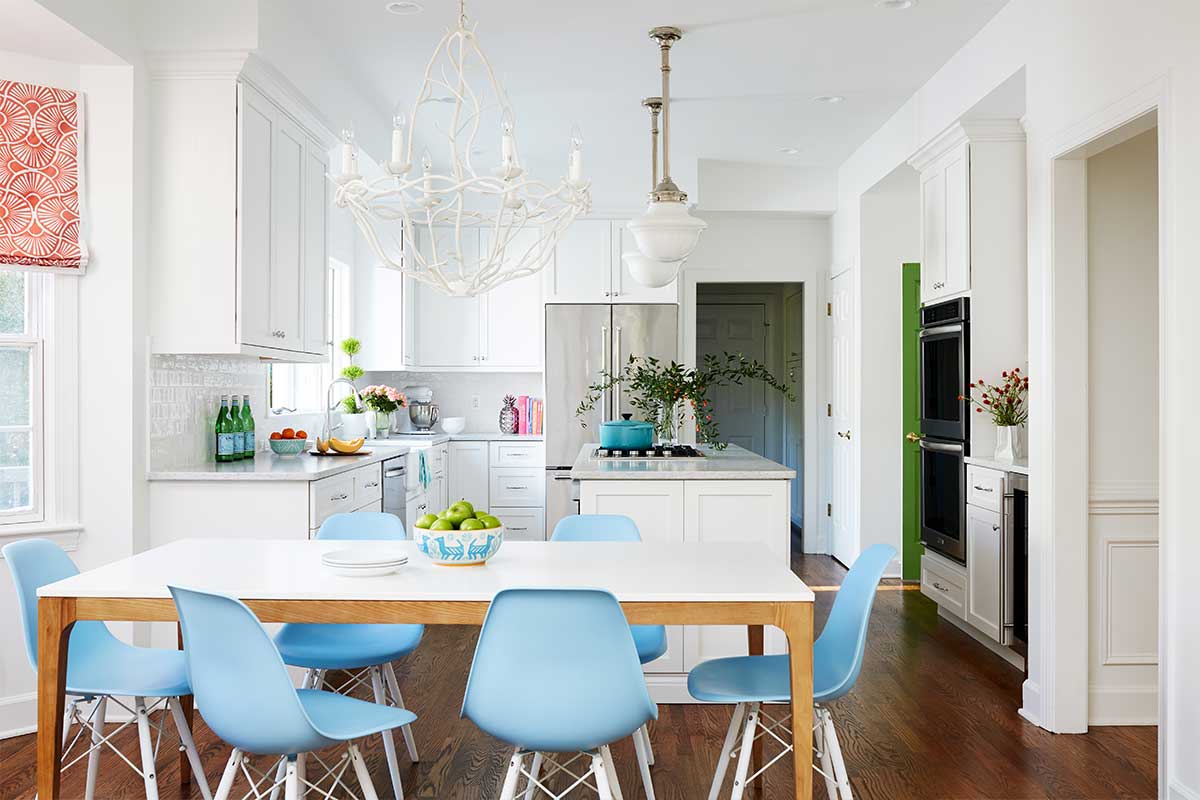Preservation architect Ashley Wilson had long admired the double-entry townhouse in Old Town, and once she purchased it in 2011, she worked hard to restore it both inside and out. She began by renovating the 18th-century building and carriage house, creating four apartments to rent out in one part of the property and a living space for herself and her family.
Wilson then shifted her attention to the shared 7,423-square-foot courtyard, enlisting the help of landscape architecture firm Richardson & Associates to put the final touches on the multiyear restoration project that was completed last year.
The courtyard wraps behind the house from the side drive, and Wilson had a clear vision. The result? An outdoor living space designed to accommodate an area for the tenants to enjoy, with a private patio, a linear garden, and artificial turf for dogs and kids. At the same time, Wilson wanted the ability to utilize all the outdoor spaces for entertaining groups of as many as 200 people.
“We wanted the project to include some privacy for the family but also an area where the tenants could hang out and enjoy a cup of coffee or a glass of wine,” says Joe Richardson, founding principal of Richardson & Associates. Finding a balance between the family’s private entertaining space and areas open to the tenants turned out to be the biggest challenge, says Richardson.
“There’s a wonderful little moment just outside of the mudroom with a small garden space adjacent to a hanging swing,” he says. “This is a great little spot to hang out in the shade.”
At the center of the space, an existing dogwood is surrounded by low plantings and a hardscape distinctive to Old Town of reclaimed brick and bluestone with crushed oyster shell demarking the drive. Wilson knew that in addition to the garden and gathering space, she still wanted to retain some parking. “And we wanted to use the oyster shells in between the tires where the cars would park,” she says.
Oyster shells are an alternative to the gravel or decorative stone typically used in coastal courtyards, walkways, and driveways to create a contrast to the surrounding landscape.
Copper roofs and gutters add a warm glow during the day, while discreetly hidden fixtures illuminate the area at night.
The planting beds and composite planters are resplendent with ferns, hostas, and boxwood shrubs.

Wilson and Richardson & Associates carefully selected fresh paint colors for the project to pull together a beautiful mix of modern sensibility and historic preservation. The colors chosen would “look good in both worlds,” Wilson says. The first, a minty sage green, matches the front door and can be seen on the accent fence that leads to a garbage and recycling enclosure. The second: a dark bluish gray.
“For the second color, I wanted something to counterbalance the green. The gray picks up the bluestone curbing and Roman brick pavers where you drive. So you have the red brick, the dark bluish gray, and then that little ping of minty sage, and it all just worked really well with the plants,” says Wilson.
“For being such a small space, this project includes so many unique areas,” says Richardson. “It’s definitely a garden where you experience more by walking past, rather than standing back and looking at it. It’s more of a linear experience.”
In the back, a painted Accoya wood trellis supports a Parrotia tree, which is espaliered and will provide changing seasonal color against the brick of the adjacent building. Richardson notes that they traveled to several tree farms in search of the perfect specimen tree as a focal point.
Wilson says, “My favorite part of this project was really just the marriage of the architectural details to the landscape details, which helped make it more modern.”
And she and her family could not be happier.
“People walk by every day and comment on how fantastic it looks,” she says. “We spend so much time out there. It is our little oasis in what is a very urban part of the city.”
Feature image by Sarah Kaupp with NoVA Soul Imagery
This story originally ran in our August issue. For more stories like this, subscribe to Northern Virginia Magazine.





